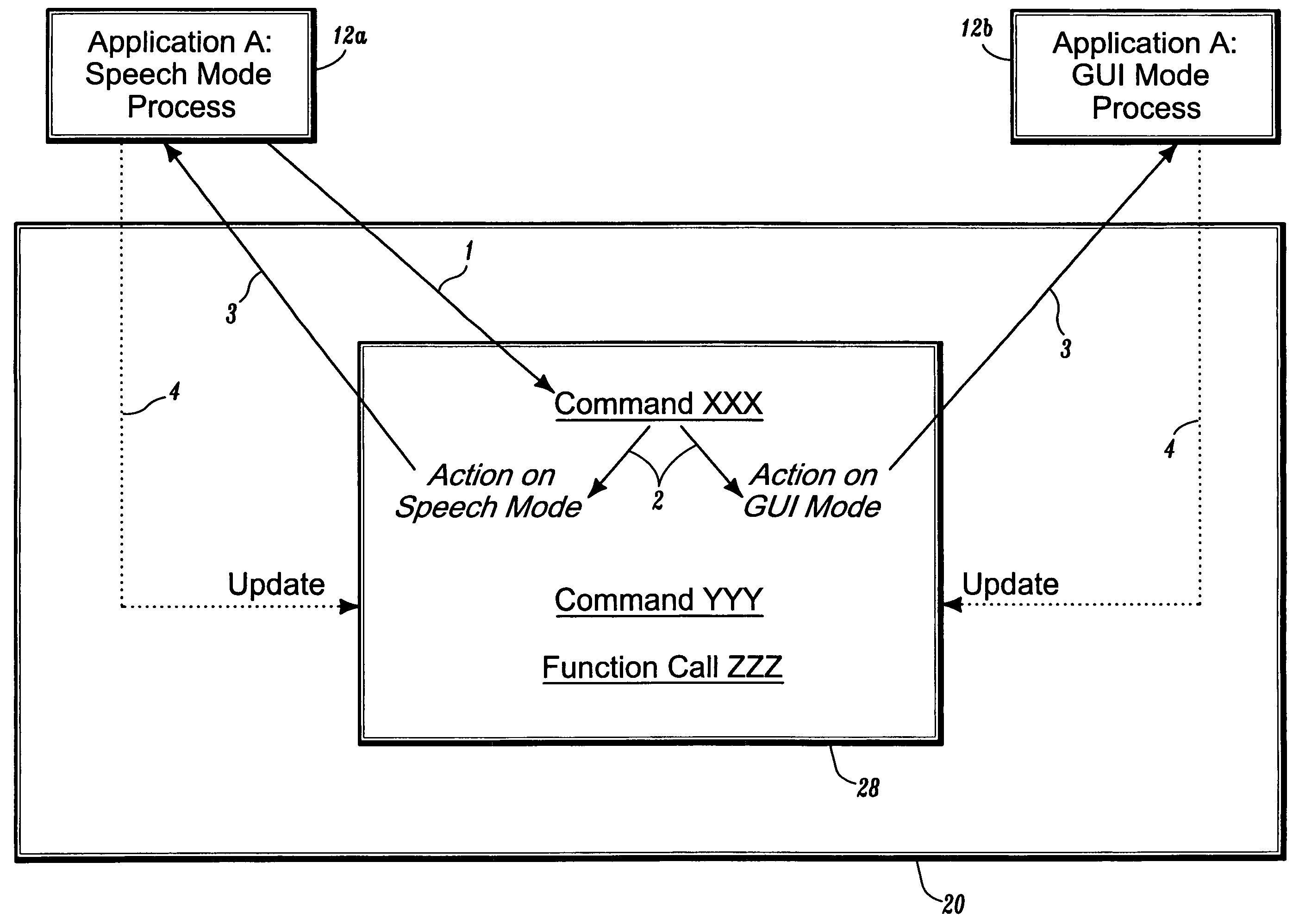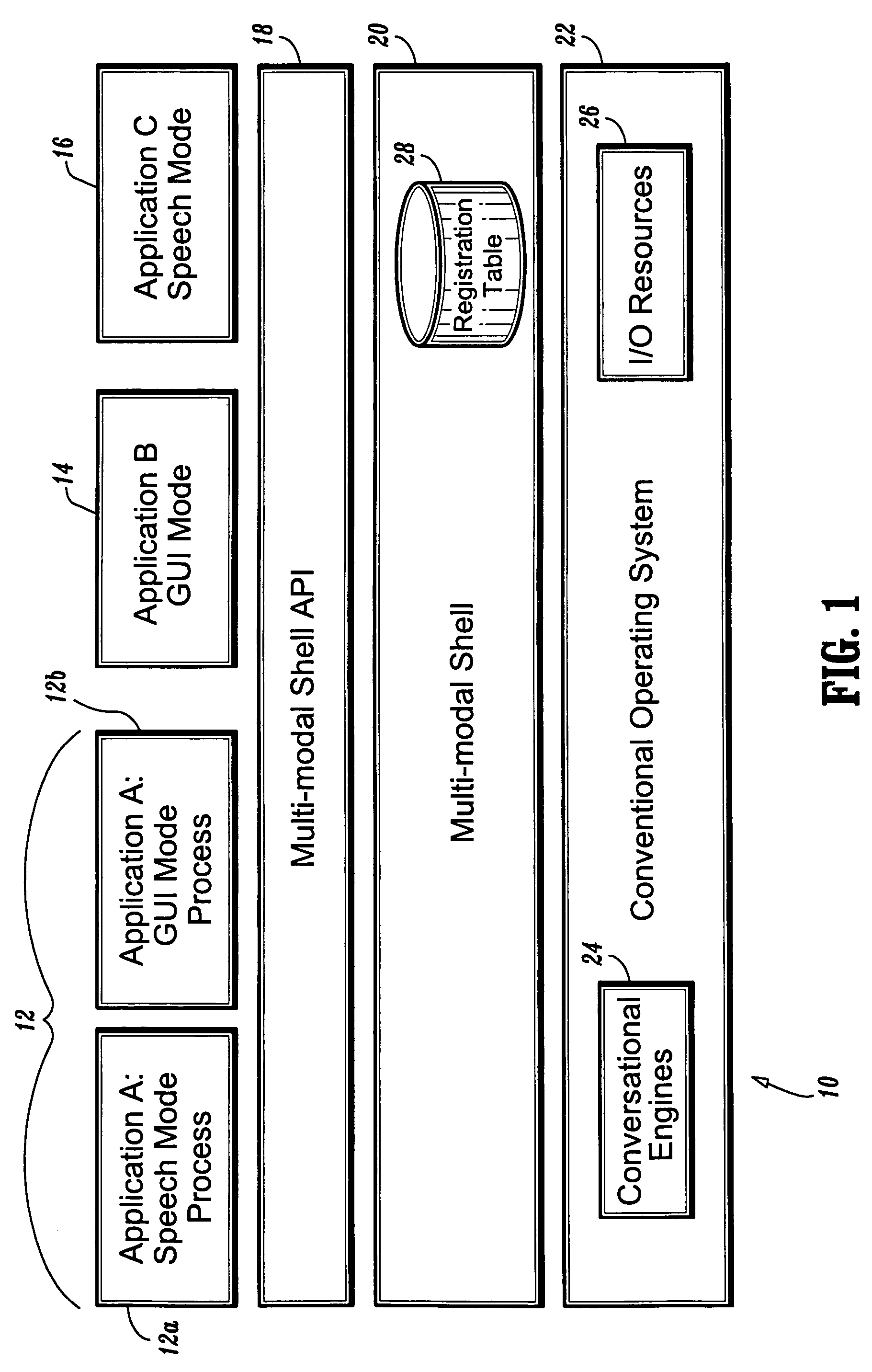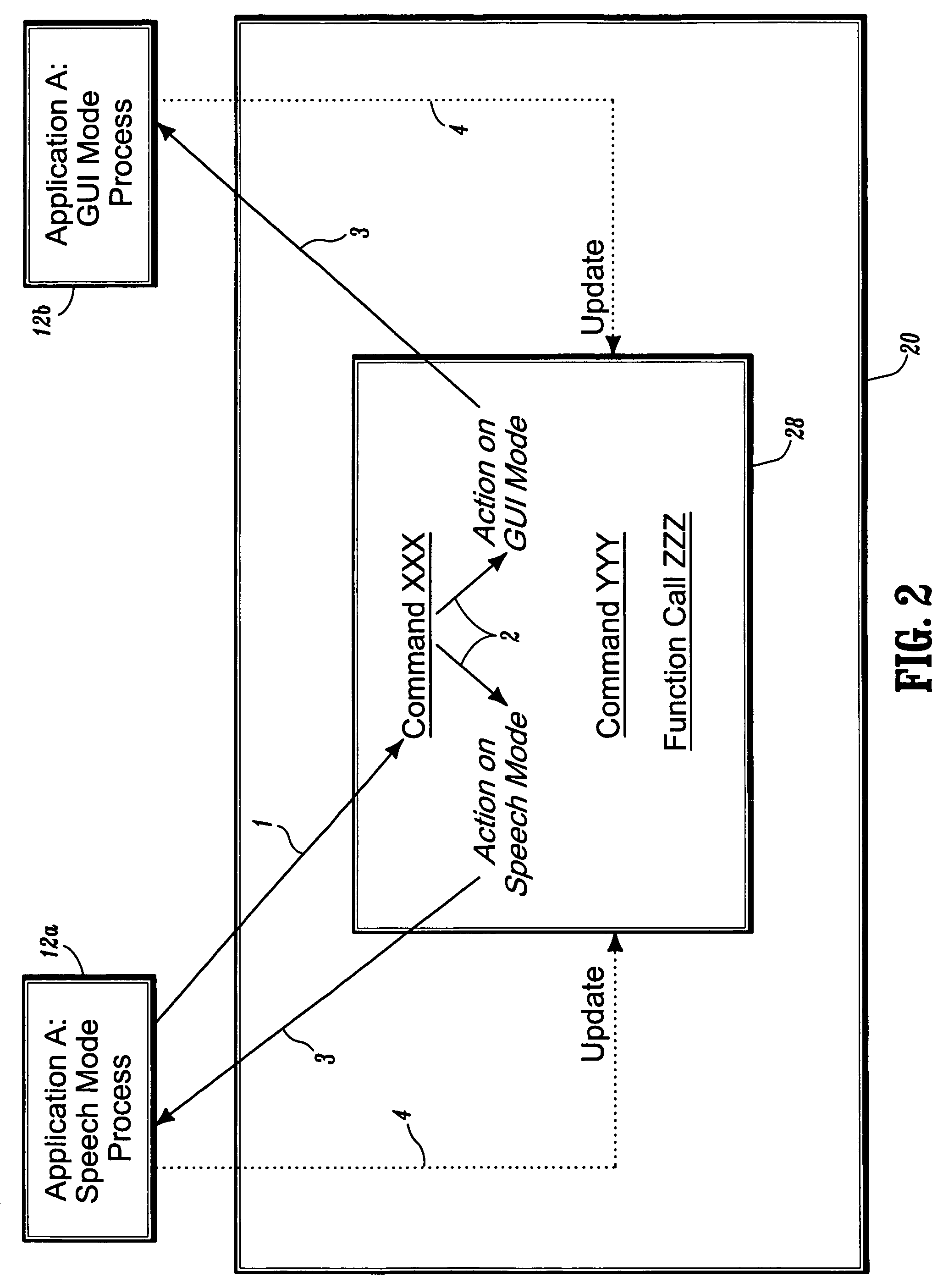Systems and methods for synchronizing multi-modal interactions
a multi-modal interaction and multi-modal technology, applied in multi-programming arrangements, instruments, computing, etc., can solve the problems of user's mental model of access devices likely to undergo a drastic shift, user's need to increase the bandwidth of man-machine communication, and users will be unable to access, act on, and transform information independently of access devices
- Summary
- Abstract
- Description
- Claims
- Application Information
AI Technical Summary
Problems solved by technology
Method used
Image
Examples
Embodiment Construction
[0027]It is to be understood that the system modules and method steps described herein may be implemented in various forms of hardware, software, firmware, special purpose processors, or a combination thereof. The present invention is preferably implemented as an application (or distributed application) comprising program instructions that are tangibly embodied on one or more program storage devices (e.g., magnetic floppy disk, RAM, ROM, CD ROM and / or Flash memory) and executable by any device or machine comprising suitable architecture (such as PDAs (personal digital assistant). It is to be further understood that, because some of the system modules and process steps depicted in the accompanying Figures are preferably implemented in software, the actual connections between such components may differ depending upon the manner in which the present invention is programmed. Given the teachings herein, one of ordinary skill in the related art will be able to contemplate these similar im...
PUM
 Login to View More
Login to View More Abstract
Description
Claims
Application Information
 Login to View More
Login to View More - R&D
- Intellectual Property
- Life Sciences
- Materials
- Tech Scout
- Unparalleled Data Quality
- Higher Quality Content
- 60% Fewer Hallucinations
Browse by: Latest US Patents, China's latest patents, Technical Efficacy Thesaurus, Application Domain, Technology Topic, Popular Technical Reports.
© 2025 PatSnap. All rights reserved.Legal|Privacy policy|Modern Slavery Act Transparency Statement|Sitemap|About US| Contact US: help@patsnap.com



